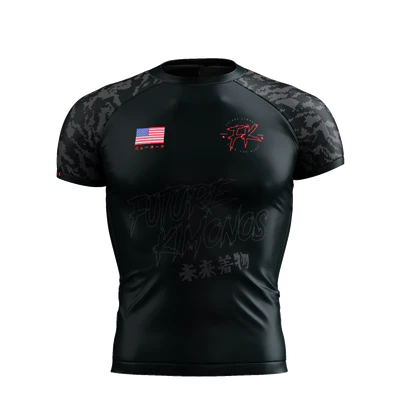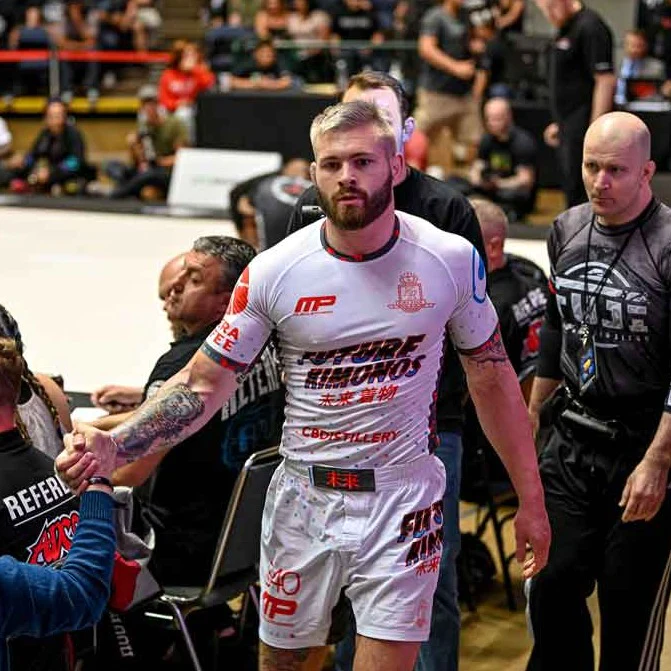
Cameron
Brazilian jiu-jitsu is a martial art that is taking over right now. The sport’s popularity is growing rapidly and new tournament circuits are popping up left and right. When training BJJ you will realize that there are two styles of play; a style that is done in a kimono known as a gi and a style that is done in rash guards and shorts, known as the no-gi style. In this article, we talk briefly about the two styles, some differences that arise, and whether or not you should be training in one of the other.

No Gi BJJ
No-gi Brazilain jiu-jitsu is one of two styles of play that can be found in the martial art. No-gi is a style that is normally completed in just a rash guard and some MMA or board shorts. Sometimes athletes that compete in this style of play do so without a rash guard on.
No-gi has grown in popularity because of popular Brazilian jiu-jitsu tournaments like ADCC. ADCC put no-gi on the forefront of everyone’s mind because it is essentially the Superbowl in the sport of jiu-jitsu. No-gi has grown so much that the traditional BJJ Federation known as IBJJF recently started holding No-Gi tournaments.

Gi Jiu-Jitsu
Traditionally, Brazilian jiu-jitsu athletes have always competed with a kimono known as a gi. Training in the gi opens up many more move sets to be played and is deemed the traditional way to train Brazilian Jiu-Jitsu.
Techniques
There are many differences between the two styles of play. One of the bigger ones is the techniques that one can play and get into. The Gi truly does open more opportunities to get stronger grips on a person and set different types of guards or chokes up. Due to the friction of the Gi, it can be harder to slip in and out of bad (or even good) positions when training or competing.
No-Gi has become more popular over the past few years because of athletes like Gordon Ryan who almost exclusively compete in no-gi tournaments. ADCC is one of the largest tournaments in the community and it is only done without the Gi.
Training no-gi will make you a better offensive player because you have to be a little more creative with your setups or attacks because of how easy it can be to slip out of positions due to sweat. Techniques like arm drags, heel hooks, various wrestling takedowns are good things to work on that will improve your no-gi game. We post regularly on our Instagram all kinds of techniques and over that can be accomplished in both styles of play so be sure to follow us there!
It is important to note that the ruleset between the two styles is different and before entering any competition you should understand what can and can’t be done. Different techniques and moves are prohibited in Gi tournaments that can be done in no-gi tournaments. Consult with your coach to understand the rules at play before signing up for your next competition.

Training Both
We believe that it is better to not pigeonhole yourself into one style of play when training jiu-jitsu. The goal here is to be a well-rounded player that can accomplish many things on the mat. The only way to accomplish this really is to learn both styles of play and build a game that is suitable for both.
Competing is the gateway to becoming the best player you can be. Putting your skills to the test against someone you don’t normally train with is the best way to find holes in your game and go back to the drawing board afterward. Try competing in both styles of play so that you can accomplish the overall goal of just getting better at Jiu-jitsu.
You should be training both Gi and no-gi. Do not get too fixated on training one over the other. Today, most gyms offer classes that teach both styles of play. The games that you play are really different but once you get a hang of it you realize that it is just jiu-jitsu. Many things you will do in one style will carry over to the next one and you will surely be able to build a well-rounded set of attacks or carry a solid defense.




